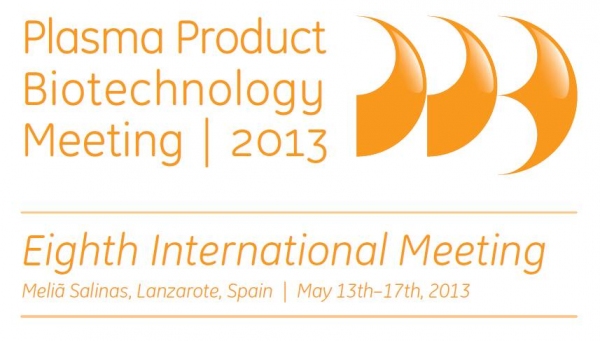
Yet another well-attended and successful Plasma Product Biotechnology (PPB) meeting has been held. The meeting focusing on the trends and innovations within the field of plasma fractionation and plasma products, was held in May on the island of Lanzarote, Spain. The PPB meeting has since the start in Australia in 1999 turned into the “major meeting series” in the arena of plasma fractionation. This eighth PPB meeting, following an island theme, gathered more than 130 persons from 26 countries. A total of 47 companies and institutes were represented, including all the major plasma fractionators. The meeting was divided into different scientific sessions focusing on issues and possibilities around manufacturing, development and clinical use of plasma products in general. In addition, a poster session allowed for an open discussion around some of the latest trends and innovations within the industry in combination with excellent networking opportunities.
The meeting was opened by a key note lecture by Julie Kim (Head of Baxter’s Bioscience Global Franchise) with the title “Plasma Fractionation Today and Prospects for the Future”. Julie emphasized that 74% of the plasma product related sales comes from Europe and North America but stressed all the unmet needs in the emerging countries. The industry needs to be prepared to also serve these markets with new business models and novel manufacturing processes. Most likely beyond the more classical Cohn derived processes. Julie Kim also pointed out how the plasma industry differs from the more traditional pharmaceutical industry in terms of raw material costs where this represents 57% of the cost for the plasma industry compared to only 14% for the pharmaceutical industry.
In the session focusing on Manufacturing Perspectives Geoffery Pot from Baxter presented a showcase around how a sterile state of the art filling line for intravenous Immunoglobulin’s could be designed, built and expected to be up and running in five years. Key considerations such as LEAN, multipurpose and flexibility was designed and built in to the facility from start, ensuring high capacity, microbial control and tracing of all filled vials. During the meeting the outbreak of thromboembolic events (TEE’s), causing IVIG product withdrawal some years ago, was still discussed. However, compared to the previous meeting in 2010 the perception is that this is now well under control. On a similar theme, the prion removal capacity of existing plasma protein manufacturing processes was presented by Nathan Roth at Grifols. The extensive study was based on a joint data collection from five PPTA member companies. The conclusion was that the prion reduction capacity of existing steps in the manufacturing purification processes should be considered as a major risk reduction factor with respect to the safety of plasma derived therapeutic proteins.
The meeting was opened by a key note lecture by Julie Kim (Head of Baxter’s Bioscience Global Franchise) with the title “Plasma Fractionation Today and Prospects for the Future”. Julie emphasized that 74% of the plasma product related sales comes from Europe and North America but stressed all the unmet needs in the emerging countries. The industry needs to be prepared to also serve these markets with new business models and novel manufacturing processes. Most likely beyond the more classical Cohn derived processes. Julie Kim also pointed out how the plasma industry differs from the more traditional pharmaceutical industry in terms of raw material costs where this represents 57% of the cost for the plasma industry compared to only 14% for the pharmaceutical industry.
In the session focusing on Manufacturing Perspectives Geoffery Pot from Baxter presented a showcase around how a sterile state of the art filling line for intravenous Immunoglobulin’s could be designed, built and expected to be up and running in five years. Key considerations such as LEAN, multipurpose and flexibility was designed and built in to the facility from start, ensuring high capacity, microbial control and tracing of all filled vials. During the meeting the outbreak of thromboembolic events (TEE’s), causing IVIG product withdrawal some years ago, was still discussed. However, compared to the previous meeting in 2010 the perception is that this is now well under control. On a similar theme, the prion removal capacity of existing plasma protein manufacturing processes was presented by Nathan Roth at Grifols. The extensive study was based on a joint data collection from five PPTA member companies. The conclusion was that the prion reduction capacity of existing steps in the manufacturing purification processes should be considered as a major risk reduction factor with respect to the safety of plasma derived therapeutic proteins.